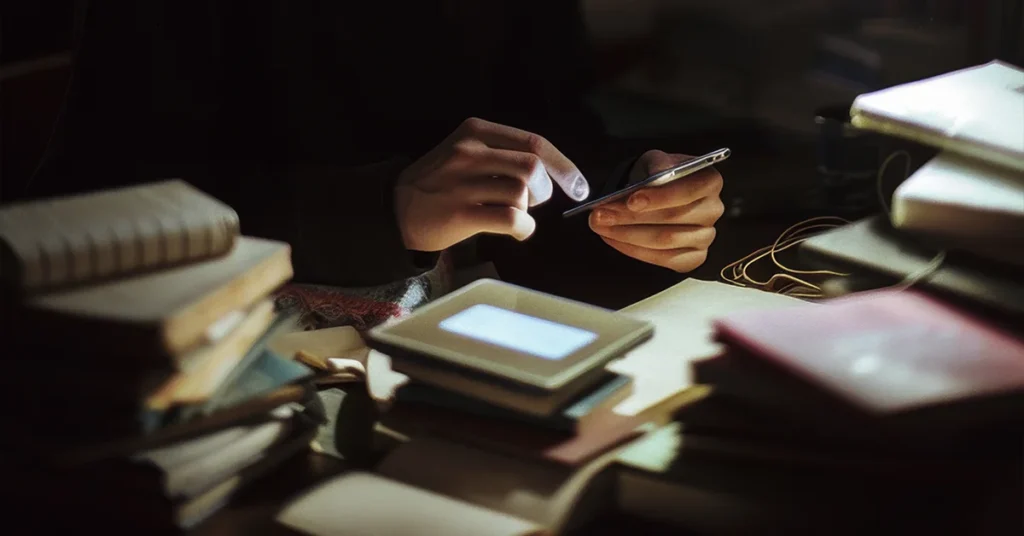If you’ve noticed Orange Discoloration MacBook Pro, you’re not alone. This issue can be surprising, especially when you’ve spent good money on a sleek, premium device. Many users start to worry — is it rust, heat damage, or something worse? The truth is, this orange tint can appear for a variety of reasons, some harmless and others that might need professional attention.
we’ll explore the causes of Orange Discoloration MacBook Pro, how to identify its source, and what you can do to fix it effectively. Whether it’s appearing on your screen, keyboard, or casing, this guide will help you bring your MacBook back to its original shine.
ALSO READ: Inside The Buzz: Exploring Misrethickulas Reddit Tube Trends
What Is Orange Discoloration MacBook Pro?
Orange Discoloration MacBook Pro typically refers to a visible orange or rust-colored tint on parts of the device — often on the aluminum body, screen corners, keyboard edges, or ports. It’s not always caused by one factor; sometimes, it’s a mix of environmental conditions, material reactions, and even usage habits.
This discoloration might appear as a light hue, stain, or patch that doesn’t go away with simple cleaning. Understanding why it happens is the first step toward an effective fix.
Common Causes Of Orange Discoloration MacBook Pro
Oxidation of the Aluminum Body
MacBook Pros are made from high-quality aluminum, but even this durable metal can oxidize over time. Exposure to moisture, humidity, or acidic substances can cause the metal to develop a subtle orange or bronze tint.
- Why it happens: When aluminum reacts with oxygen or certain contaminants, it forms aluminum oxide, which sometimes appears orange or rust-like.
- Where it appears: Typically near edges, ports, or palm rests.
Heat Exposure or Overheating
Excessive heat from long usage sessions or blocked air vents can lead to discoloration. When your MacBook gets too hot, the heat may slightly alter the color of the casing or screen tint.
- Why it happens: The anodized aluminum surface or screen backlight can change tone due to heat stress.
- Where it appears: Around the keyboard, near the power button, or on the screen bezel.
Sweat and Skin Oils
Human sweat contains salts and acids that can react with aluminum. If you often use your MacBook without washing your hands or in humid conditions, this could lead to Orange Discoloration MacBook Pro over time.
- Why it happens: Oils and acids create micro-reactions with the surface, leaving orange or brownish marks.
- Where it appears: Palm rests, trackpad edges, or near the keyboard.
Liquid Spills and Residue
Even a small spill — coffee, juice, or soda — can stain your MacBook’s body or seep into crevices. As the liquid dries, it can leave behind orange or yellowish residue.
- Why it happens: Pigments and sugars in beverages or food cause surface staining.
- Where it appears: Keyboard, USB ports, or touch bar area.
Screen Tint Issues or Burn-In
If the discoloration is on the display itself rather than the body, it may be due to screen burn-in or pixel aging. Older MacBook Pro models with LCD or Retina displays can develop a warm orange tint over time.
- Why it happens: Uneven pixel wear or prolonged exposure to static images can alter display color balance.
- Where it appears: Screen corners or the entire display.
How To Identify The Source Of Orange Discoloration MacBook Pro
Before you try any fix, it’s essential to determine where the problem is coming from.
Inspect the surface carefully: Use a soft light to check if the discoloration is on the outer surface or beneath a protective layer.
Check the display separately: Open a white background on the screen. If the tint appears only when powered on, it’s likely a display issue.
Clean a small area: Try a gentle cleaning method on a tiny spot to see if it fades.
Note environmental factors: If you work in a humid area or near heat sources, oxidation or heat tint could be the culprit.
Once you identify the cause, you can move on to the most effective fix.
Effective Fixes For Orange Discoloration MacBook Pro
Use a Microfiber Cloth and Isopropyl Alcohol
For surface stains, a microfiber cloth lightly dampened with 70% isopropyl alcohol is your best friend. Gently wipe the affected area in circular motions. Avoid applying too much pressure.
Steps:
- Turn off your MacBook and unplug it.
- Apply a few drops of alcohol on a cloth (never directly on the device).
- Gently wipe the orange areas.
- Let it air-dry completely.
Best for: Sweat stains, mild oxidation, and surface discoloration.
Try a Mild Aluminum Cleaner (for Body Stains)
If alcohol doesn’t work, a non-abrasive aluminum cleaner can help restore the metal finish. These products are designed for anodized surfaces and won’t scratch the MacBook’s body.
Steps:
- Apply a tiny amount on a soft cloth.
- Rub gently on the discolored area.
- Wipe clean with a dry cloth.
Caution: Always test it on a small, hidden area first to avoid altering the texture.
Address Heat Problems
If overheating is causing the tint, focus on cooling your MacBook Pro rather than cleaning.
Tips:
- Avoid using it on soft surfaces like beds or couches.
- Keep air vents clear.
- Use a cooling pad or external fan.
- Regularly clean out dust from the fans using compressed air.
Lowering the temperature will prevent further discoloration and may even reduce existing marks slightly.
Clean the Screen Gently
If the discoloration appears on your screen, avoid harsh chemicals. Instead, use a microfiber cloth and a screen-safe cleaner or distilled water.
Steps:
- Power off and unplug your MacBook.
- Wipe in gentle, circular motions.
- Avoid pressing too hard to prevent pixel damage.
If the orange tint persists, it may be a display calibration or aging issue.
Recalibrate the Display
For cases where the orange hue is visible on-screen, recalibration can help.
Steps:
- Go to System Settings > Displays > Color.
- Choose Calibrate Display (or manually adjust color temperature).
- Adjust the white point and color balance until the orange tint disappears.
This is especially useful for older Retina MacBook Pros that naturally develop warmer tones.
Replace the Top Case or Screen (If Necessary)
If the discoloration is severe — for example, deep oxidation, heat burn, or liquid damage — replacement may be the only long-term fix.
- Top case replacement: For body discoloration that won’t come off.
- Screen replacement: If the tint is permanent and affects usability.
It’s best to get this done at an authorized Apple repair center to ensure quality and maintain warranty protection.
Preventing Orange Discoloration MacBook Pro
An ounce of prevention is worth a pound of cure. Here’s how to keep your MacBook pristine for years to come:
Use a protective case or skin to prevent direct exposure to sweat and spills.
Keep your workspace clean and dry.
Avoid using harsh cleaners or rough materials on the aluminum body.
Store your MacBook in a cool, dry place when not in use.
Regularly clean your device with a microfiber cloth to prevent buildup.
Following these habits can help maintain the iconic silver sheen of your MacBook Pro.
When To Seek Professional Help
If your efforts don’t yield results or the discoloration is spreading, it’s best to consult a professional technician. Apple’s authorized repair centers can identify whether it’s cosmetic, hardware-related, or a deeper issue with the display assembly.
Seek professional help if:
- The discoloration affects the display quality.
- It’s accompanied by overheating or strange noises.
- The aluminum surface feels corroded or rough.
Conclusion
The Orange Discoloration MacBook Pro may look alarming, but it’s often manageable. From surface oxidation and heat exposure to screen tints, the causes vary — and so do the fixes. Whether you’re cleaning the body, recalibrating the screen, or addressing overheating, a bit of care can go a long way in restoring your MacBook’s sleek look.
With consistent maintenance and preventive care, you can keep your device looking and performing like new for years. Remember, it’s not just a computer — it’s an investment worth protecting.
FAQs
What is Orange Discoloration MacBook Pro?
Orange Discoloration MacBook Pro refers to an orange or rust-like tint appearing on the aluminum body or screen. It can be caused by oxidation, heat, or residue buildup over time.
Can I remove orange stains from my MacBook Pro myself?
Yes, in most cases. Gentle cleaning with a microfiber cloth and isopropyl alcohol can remove light stains. For stubborn cases, mild aluminum cleaners or professional service may be needed.
Is Orange Discoloration MacBook Pro a sign of damage?
Not always. Sometimes it’s cosmetic, but if it appears alongside heat issues or screen distortion, it could indicate deeper hardware problems.
Will Apple repair Orange Discoloration MacBook Pro under warranty?
If it’s due to a manufacturing defect, Apple might cover it. However, stains from liquids, sweat, or external factors are usually not covered under warranty.
How can I prevent Orange Discoloration MacBook Pro in the future?
Keep your MacBook clean and dry, use protective cases, avoid exposing it to heat or moisture, and wipe it down regularly with a soft cloth.
ALSO READ: Rediscovering Bonds: The Childhood Friend Of The Zenith



